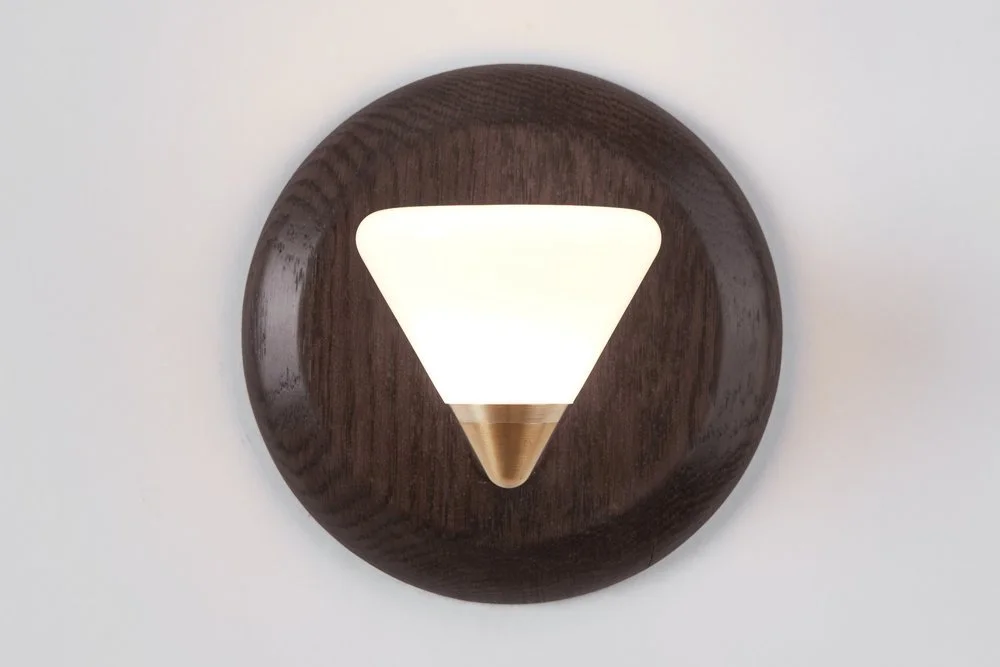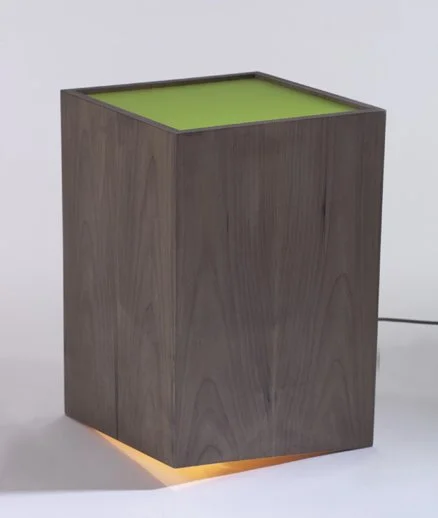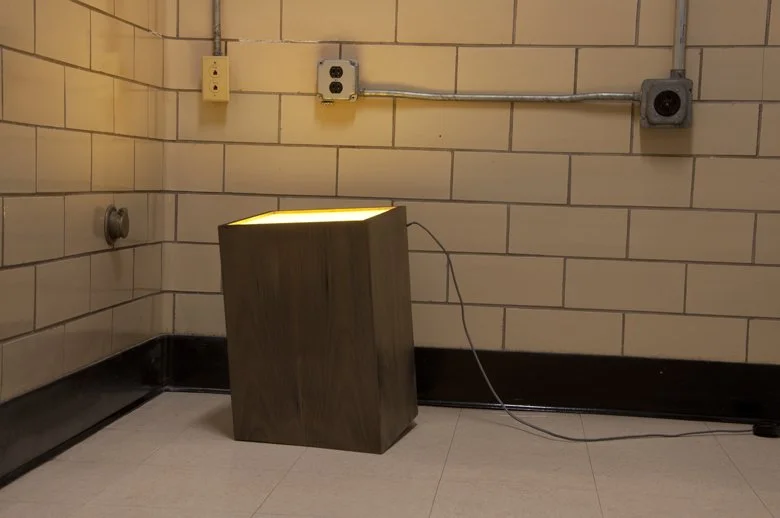2012
American red birch, wireless communicator, electronic components, coding in Arduino
Indicator dials. It’s been a reoccurring item in a lot of these projects, but mostly as just another component. With the Remote Control, it’s all about the indicator dial. The profile is a “truncated octagon” of sorts - only 7 sides exist, but each are 45 degrees apart from the next side. Two of the sides come to a 90 degree point, creating a reference of indication.
This profile actually came about by accident. I was preparing turning blanks for a project that involved woodturning in a public setting, almost as a performance. To make my life easier for the performance, I decided to take my square blanks and “45” the edges along the length, to create an octagonal profile. This action gets the blank closer to a circular profile, thus making turning easier once mounted to a lathe. Before the last cut was made, I noticed something interesting - an indicator dial was created in extruded form.
The Remote Control is made of solid wood (birch), as a reference to the wooden blocks I spent hours building civilizations with as a child. There is no indicator light, or visible on/off switch. Nothing that would tell you it has a brain inside capable of reading angles wirelessly control power outlets.
In many ways, this combines a lot of the features of previous projects. The coding allows the Remote Control to act as a dimmer knob of sorts - as the indicator rises, more things go on. This is my intention, but as this is an open device, you may have a different program in mind. Perhaps you want facet #3 to only output outlet #3 (as opposed to outlets 1-3), while facet #2 outputs all even-numbered outlets. However, instead of reading a potentiometer typical of dimmer knobs, the Remote Control uses my beloved accelerometer to read the angles of each facet.
As the remote roles from position 1 - position 7, another outlet is activated.
The Remote Control is a reaction to my utter disdain for universal remotes and home automation systems. Most of these items are over-complicated, and use multi-layered digital menus to cycle through. They drive me nuts. I love simple, almost dumb, interfaces, and so the Remote Control was born. It is a simple, analog interface to control a rather complex digital system. As a child of the 80’s, I cannot let go of my analog world. I pity the children today who only know the faux world of Instagram, but have never held a Polaroid in their hand as it developed into a crisp image before their eyes.
































































































